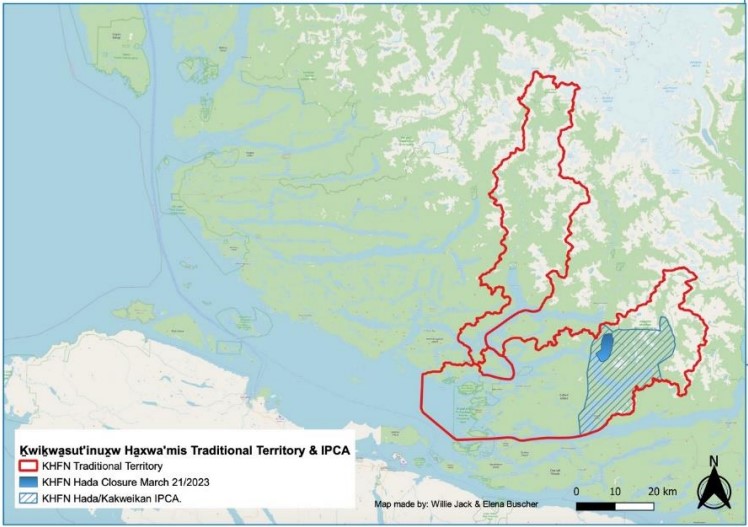Under its own laws, Ḵwiḵwa̱sut’inux̱w Ha̱xwa’mis First Nation has declared Hada (Bond Sound) and Kakweikan (Thompson Sound), on the west coast of British Columbia, an Indigenous Protected and Conserved Area (IPCA).

The nation said the declaration confirms its management and stewardship of the area — Hada & Kakweikan is Nawalakw (supernatural and sacred) to the community.
In a release, it describes the area as crucial to nuya̱mbalis, or ancestral stories that tell the community’s core values and history.
An IPCA is lands and water that are stewarded by Indigenous people through their respective laws, governance and knowledge systems. Hada & Kakweikan’s IPCA covers over 40,000 hectares.
“It is past time that Ḵwiḵwa̱sut’inux̱w Ha̱xwa’mis First Nation and all Indigenous Nations become fully recognized as the proper caretakers of our lands and waters,” said hereditary and elected Chief Tlakuglus (Rick Johnson). “For too long, we have witnessed the impacts caused by other governments and industries who have benefited from extractive practices in our territories to the detriment of the food resources that sustain our people.
“This IPCA represents our vision for a future where all beings thrive. Upholding our laws will ensure that the medicines, the foods, the cedar, the salmon, the eulachon and all of the maʼmikas (natural resources) that are sacred to our people will always be there.”

Get daily National news
Hada & Kakweikan are hubs for cultural revitalization — they play host to both the Nawalakw healing centre and community youth culture camp. The area includes watersheds, ecology, village sites and other locations representative of Ḵwiḵwa̱sut’inux̱w Ha̱xwa’mis’s cultural heritage.

The areas have been impacted by overfishing and the depletion of culturally important species like eulachon, littleneck clams, Pacific herring and Pacific salmon, Ḵwiḵwa̱sut’inux̱w Ha̱xwa’mis First Nation explains in a release.
The community is actively working to prevent the extinction of wild salmon in its territory and has been able to remove Atlantic salmon farms from its waters. It says the Hada & Kakweikan IPCA is the next step.

Adjacent to the Gwaxdlala/Nalaxdlala IPCA, which was declared by Mamalilikulla First Nation on Nov. 29, 2021, the Hada & Kakweikan declaration will have the nation review existing parks, conservancies, tenures and other designations that have been issued by the Crown on its land.
And while recognized by the community and surrounding nations, Hada & Kakweikan is not federally recognized. There are three federally recognized IPCAs in Canada, all of which are located in the Northwest Territories.
“In the era of reconciliation, supporting the Ḵwiḵwa̱sut’inux̱w Ha̱xwa’mis First Nation with their IPCA is the right thing to do,” Gwawaenuk First Nation hereditary Chief Robert Joseph said in a release. “The government should welcome a partnership with (the nation) on this IPCA.”
Looking for more Indigenous news? Find our stories here.





Comments